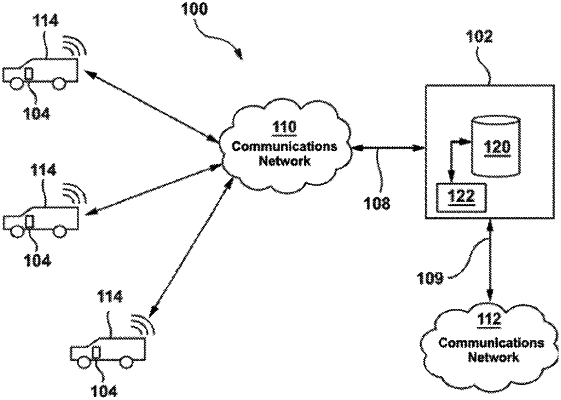| CPC G08G 1/0125 (2013.01) [G08G 1/0112 (2013.01)] | 11 Claims |

|
1. A method comprising:
receiving an identification of a first geographic region;
receiving an identification of a second geographic region;
determining a number of vehicle journeys by a plurality of vehicles between the first geographic region and the second geographic region in at least a time interval, by:
receiving location data for the plurality of vehicles, the location data indicative of a succession of a plurality of trips travelled by each vehicle and indicative of at least one rest period of each vehicle wherein the respective vehicle is not moving, each trip in the plurality of trips being separated from a preceding trip by a respective rest period of the at least one rest period;
determining, for each vehicle in the plurality of vehicles, a number of journeys travelled between the first geographic region and the second geographic region by the vehicle, by:
comparing each rest period of the at least one rest period for the vehicle to journey criteria; and
tabulating a number of journeys by the vehicle between the first geographic region and the second geographic region, where one journey includes one or more successive trips of the plurality of trips, each of the successive trips separated from each other by a respective rest period of the at least one rest period which satisfies the journey criteria, and the successive trips together representing travel between the first geographic region and the second geographic region;
generating traffic analysis results based on the determined number of journeys; and
outputting the traffic analysis results to a user to provide the user with information regarding traffic patterns between the two regions.
|